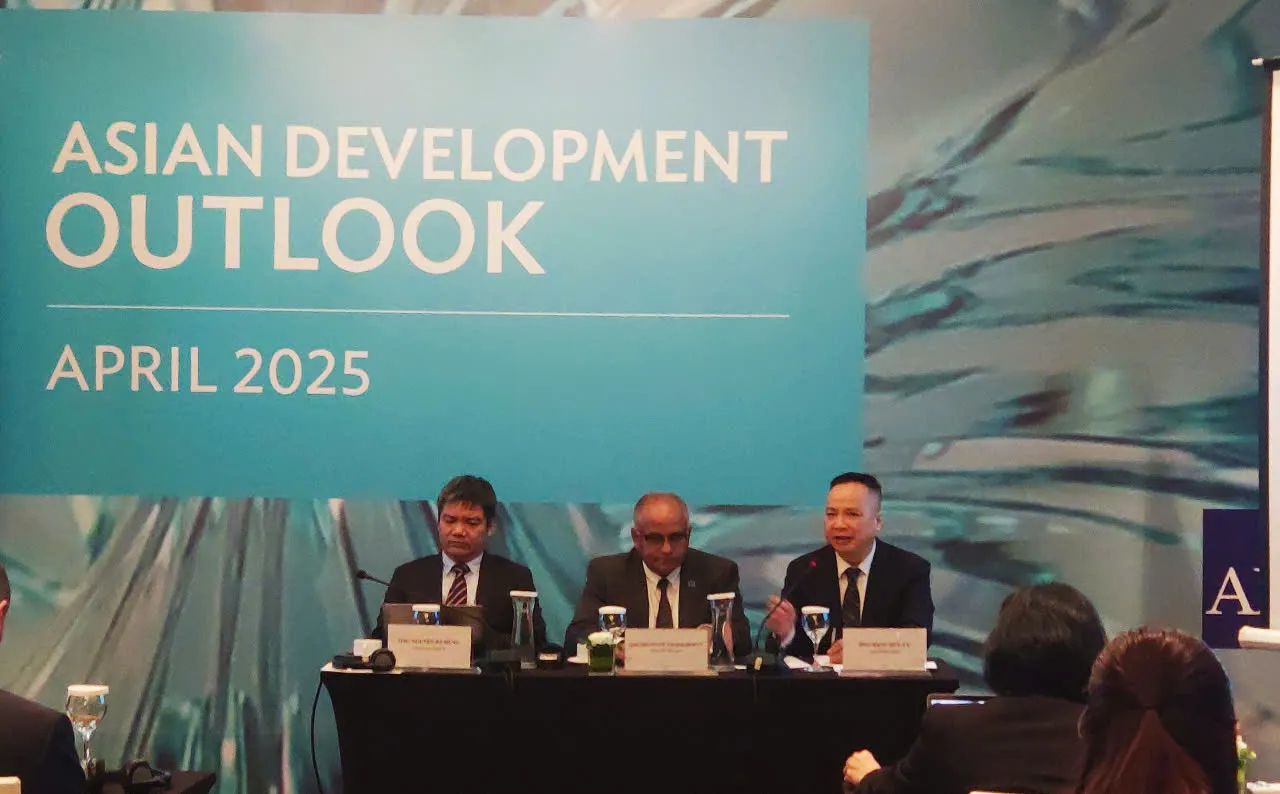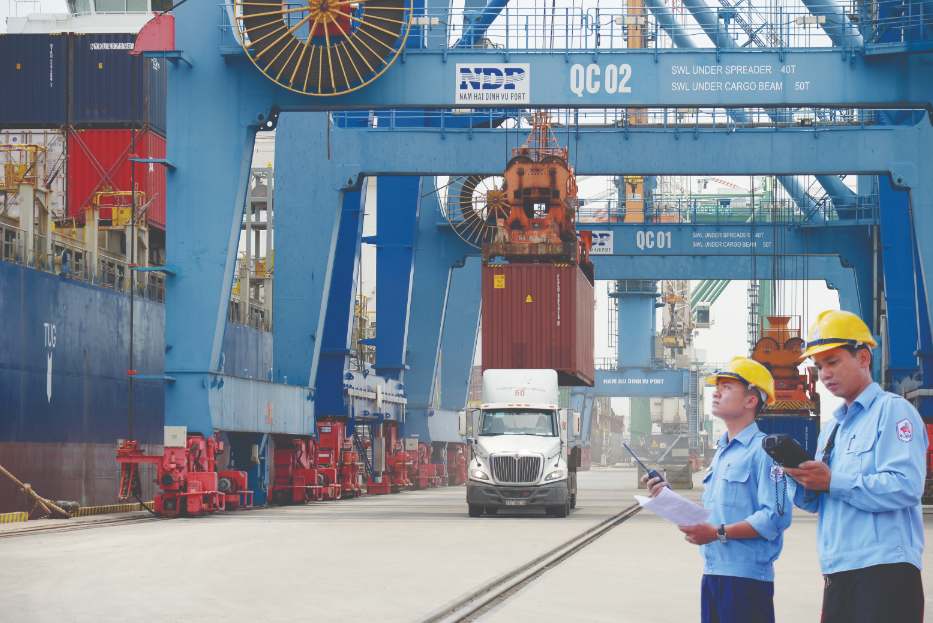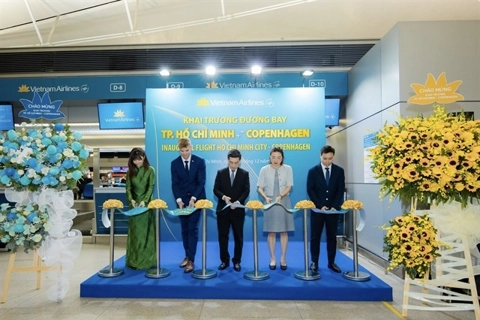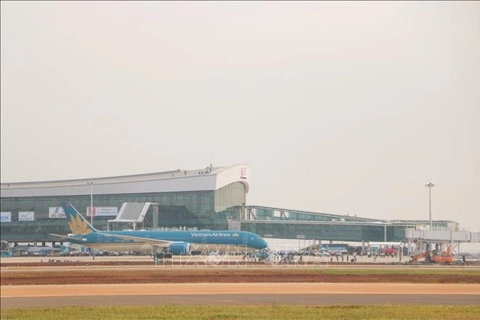ADB projects Vietnam's GDP growth at 6.6% this year
Higher and sustainable economic growth is possible if ongoing, extensive institutional reforms are implemented swiftly and efficiently.
THE HANOI TIMES — Vietnam's GDP growth is expected to expand by 6.6% in 2025 and then moderate to 6.5% for next year, according to Shantanu Chakraborty, ADB Country Director for Vietnam, speaking at a press conference on April 9 [today].

Speakers share information at the ADB's press conference held in Hanoi on April 9. Photo: Ngoc Mai/The Hanoi Times
“This indicates the country’s economy continued solid performance in line with the past trend, with a slight rise in inflation, set around 4% in 2025 and 4.2% in 2026,” said Chakraborty.
For 2025, the State Bank of Vietnam has set target of 16% credit growth to boost economic activity, in which inflationary pressures, an increase in bad debt and a weakening dong could be limited factors, he added.
Delving into the positive side, the ADB director said that the Vietnamese Government has undertaken comprehensive institutional reforms to improve government efficiency and spur growth.
“This will certainly result in higher and sustainable economic growth if these ongoing, extensive reforms are implemented swiftly and efficiently,” he said.
He also noted that these reforms would create opportunities to stimulate the domestic economy and enhance governance efficiency in the near term, and consequently promote private sector development over the medium and long term, thus helping mitigate some of the external risks and uncertainties.

Cargo handling at Nam Hai Dinh Vu Port. Photo: Pham Hung/The Hanoi Times
Shantanu, however, warned that the forecast was finalized prior to the announcement of US tariff measures in early April.
“The evolving global economic environment, significantly affected by the US’s recent announcements on tariffs and geopolitical tensions, could constrain near- to medium-term economic growth,” he said.
External uncertainties, such as tariff escalations, reciprocal measures, the prolonged Russia-Ukraine war, and slowdown in the US and China, who are Vietnam’s major trading partners, could further heighten volatility.
Integrating into global supply chains as key challenge
ADB’s Principal Economist in Vietnam Nguyen Ba Hung highlighted the need for Vietnam to enhance its value addition in the global supply chains, a key policy challenge for the country’s development.
Slowing trade would reduce the current account surplus to the equivalent of 2.5% of GDP this year, he said.
“As the global economic dynamics shift, Vietnam’s role in the global supply chain integration is also evolving,” said Hung.
According to Hung, the implementation of advanced technologies, such as supply chain management and quality control tools, will promote operational efficiency and responsiveness to market demands.
To facilitate this business transformation, the government should implement policies that improve infrastructure for efficient logistics, trade facilitation, and digitalization to maintain competitiveness. Additionally, more effective strategies and programs are needed to better integrate small and medium-sized enterprises into global value chains, particularly those already engaged through foreign direct investment (FDI).
“Ties with FDI firms already in the country present an opportunity to diversify external demand when export markets are tightened,” he said.
Regarding the tariff announced by the US, Hung said that maintaining economic stability, ensuring the well-being of the vulnerable and maintaining jobs remains a top priority, making additional fiscal stimulus essential to boost domestic demand.
“Extending the VAT reduction until late 2026 is a positive step, but broader measures, such as potential income tax and fee cuts, as well as social spending expansion, could also be considered,” added Hung.
For long-term growth further structural reforms to relieve regulatory burdens for businesses and households will be priority, he said.











